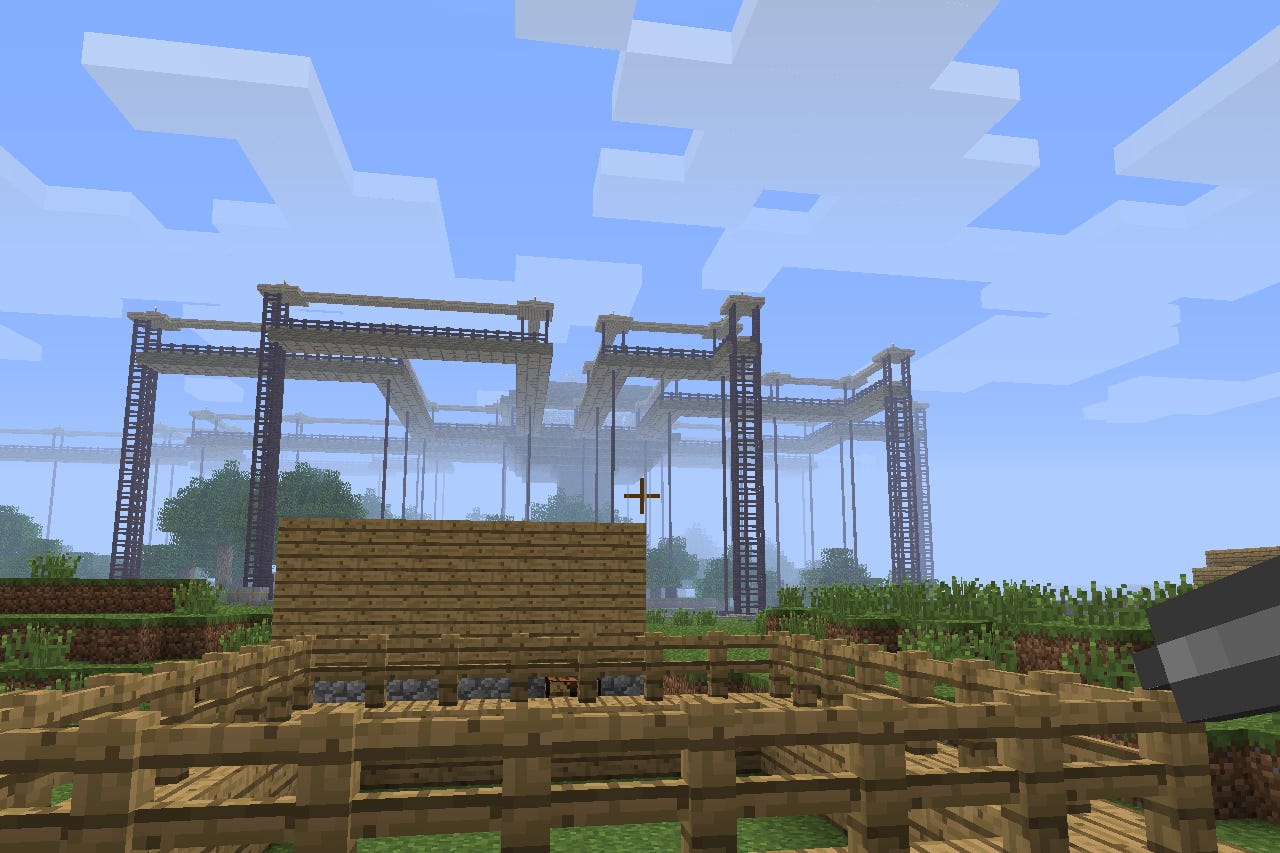
This week, BBC Future published an article of mine about Minecraft, the block-filled, sandbox video game that has captured the hearts of hundreds of millions of gamers worldwide.
I first played Minecraft about eight years ago and was immediately impressed by how easy it was to pick up a controller and just start messing around with the game world – playing with the very fabric of it all. Digging here, building there. I made all kinds of nonsensical structures.
This form of play, formally called “constructive play”, is fundamental to humans, it turns out. Children seem innately drawn to stacking blocks, building sandcastles or constructing little forts. Minecraft is a 21st Century version of this activity. As a psychologist explained to me for my BBC story, human children engage in constructive play because we evolved the ability to build things as a means of survival. All mammals play at the skills they must master for survival, and we are no different.
Lifelong builders
After I wrote the Minecraft article, I stuck “the joy of building” into Google to see what would come up. Among the things I found was, funnily enough, a Minecraft-themed YouTube channel, but there was also a page on an architect’s website about exactly the sort of childhood play I had been writing about. The post is mostly a series of pictures of kids hard at work building various structures and it ends like this:
“This isn’t just childhood expression or random play. It’s a universal drive that spans our entire lives, rooted in community and healthy development. Building helps us to grow – not just into adulthood – but as a lifelong practice that engages our surroundings, our senses and our place in the world.”
The theme of this newsletter is reengineering. Building things differently, and hopefully better, than before. When it comes to climate change, you could argue that the drive to build is what got us into our current mess in the first place. Humans have built fossil fuel-guzzling machines, mega-farms and settlements that depend on these things – practically the entire planet now lies bestrewn with emissions-generating entities.

Can we build our way out of this? However ironic it might seem, we’re probably going to have to. There are benefits to simply doing less or using fewer resources – that’s a key part of a sustainable economy – but the ongoing development of civilisation is what will save lives and, ultimately, the planet.
I’m neutral on the specific technologies that will power the future. Every single one has pros and cons. And while there are cheerleaders out there for everything from natural insulation materials to solar panels, the thing I’m most interested in is the overall shift. The energy transition and the rise of resilience. This massive transformation we are all going through. Because some people are applying incredible ingenuity to the challenges that face us.
A better world
Those people might have an idea for a new, clean, energy-generating contraption, or a novel way to protect themselves from climate hazards – or maybe they’ve worked out how to retrofit their home without spending exorbitant sums of money.
Many, if not most, of the ideas that humans have are doomed to fail. That’s arguably just natural selection. But people plough on. Thinking, building, reengineering. If we’ve got the right motivations, and guidance, then our building and engineering instincts might be put to good use. We can see the world around us and we instinctively know it could be better.
It’s like building a new sandcastle with the sand you used to make a previous one. Sitting there on the beach, completely transfixed by your little project, you are convinced that the next iteration is going to be an improvement. You have plans and schemes for it. So you plunge your hands into the seawater-saturated grains and get to work. You dream – and then you build.
Further reading on this week’s story
There’s a great, detailed overview of constructive play over on educator William Lockitt’s website.
Scientists for Global Responsibility, an advocacy group, has published an article on the role of engineers in tackling climate change. It’s a slice of history, adapted from a speech delivered way back in 2003. But many of the points are still relevant today.
Thanks for reading! If you enjoyed this story, don’t forget to share it with your friends and colleagues. You can also subscribe to The Reengineer and follow me on Bluesky.




